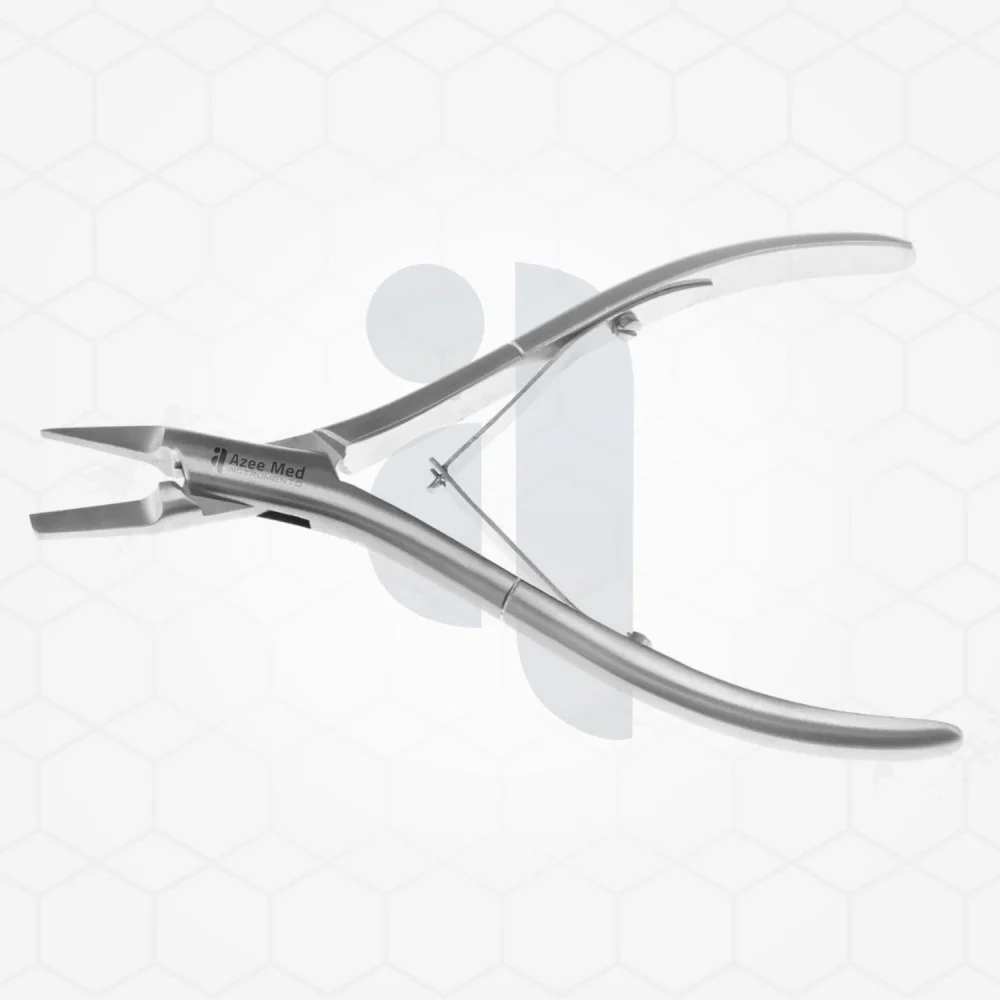
The success of podiatric surgery hinges on precision, skill, and the right tools. From routine procedures to complex surgeries, podiatrists rely on specialised instruments designed to meet the unique challenges of foot and ankle care. But which surgical instruments play a critical role in podiatry? What sets them apart? Let's explore the importance, types, and benefits of podiatry surgical instruments and why they are indispensable in modern medicine.
Why Are Podiatry Surgical Instruments Important?
Podiatry deals with conditions affecting one of the most complex structures in the human body – the foot and ankle. These areas comprise 26 bones, 33 joints, and over 100 muscles, tendons, and ligaments. The delicate architecture requires surgical tools that offer precision and reliability.
Using specialised podiatry instruments ensures:
- Enhanced accuracy: Precision tools allow surgeons to perform intricate procedures with minimal risk to surrounding tissue.
- Better patient outcomes: High-quality instruments help reduce operating times and improve recovery.
- Adaptability for various procedures: From bunion removal to complex fracture repair, podiatry tools cater to a wide spectrum of surgeries.
Neglecting the importance of proper surgical instruments can compromise a procedure's success, leading to longer healing times or complications.
Types of Podiatry Surgical Instruments
A wide range of instruments is available for podiatry, each designed for specific surgical needs. Below are the main categories and their uses.
1. Cutting and Dissecting Instruments
- Scalpels: These are indispensable for precise incisions during surgeries. Podiatrists often use small, sharp blades for detailed work on the foot's intricate structures.
- Bone Rongeurs: These instruments are designed to cut and trim bone tissue, especially useful during surgeries for bunions or deformities.
- Surgical Scissors: From dissecting tissue to trimming sutures, scissors serve various purposes. Specialized microsurgical scissors are often required for intricate procedures.
2. Grasping and Holding Instruments
- Forceps: Tissue or bone fragments need secure handling during surgery. Different types of forceps, including toothed and smooth options, are used depending on the tissue type.
- Needle Holders: Essential for suturing, these tools keep needles steady, ensuring precision under magnification.
3. Retracting and Exposing Instruments
- Skin Retractors: These instruments hold back skin or tissue, allowing surgeons better visibility of the surgical site. Common designs include those with hooks or loops.
- Joint Spreaders: Used in procedures involving joints, these tools expose the operative area without damaging the surround structures.
4. Bone Instruments
- Osteotomes and Chisels: These are critical for shaping bones, especially for corrective procedures such as realigning the metatarsal bone.
- Bone Cutters: These tools allow podiatrists to accurately cut bone, often used in the removal of spurs or tumours.
5. Specialised Instruments
- Tourniquets: These minimise blood flow, providing a clearer operating field.
- Podiatry Burrs: Used in procedures such as debridement, these high-speed drills help to smooth bone surfaces or remove growths.
Key Benefits of Using High-Quality Podiatry Surgical Instruments
Investing in the right surgical instruments offers numerous advantages for both surgeons and patients.
Improved Surgical Precision
Advanced materials and ergonomic designs make modern podiatry instruments more effective. For instance, titanium tools offer lightweight durability, allowing for better control.
Reduced Risk of Complications
High-quality instruments minimise tissue trauma, reducing the likelihood of post-operative infections and ensuring faster recovery.
Longevity and Reliability
Well-crafted tools are resistant to wear and tear, making them a cost-efficient choice for healthcare providers. Stainless-steel instruments, for example, withstand multiple sterilisation cycles without degrading.
Enhanced Patient Comfort
Using appropriate instruments helps surgeons perform procedures with minimal invasiveness. This reduces swelling, pain, and discomfort for patients after surgery.
Choosing the Right Surgical Instruments
When selecting instruments for podiatry surgeries, emphasis should be placed on factors like precision, material quality, and usability. Features such as textured grips and anti-glare finishes enhance the surgeon's experience while boosting accuracy. Additionally, trusted manufacturers of rasp surgical instrument often offer warranties and after-sales support, which is vital for any medical practice.
Final Thoughts
From improving surgical outcomes to enhancing patient comfort, podiatry surgical instruments are vital components in foot and ankle care. Each tool, whether a scalpel or a retractor, plays a critical role in ensuring procedures are accurate and efficient. By investing in high-quality instruments specifically designed for podiatry, medical professionals can deliver outstanding care while meeting the challenges of this complex specialty.
Comments on “Essential Podiatry Surgical Instruments for Precision and Care”